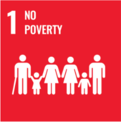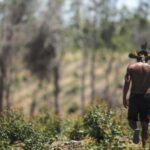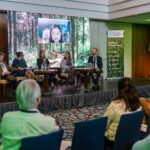The UN Sustainable Development Goals (SDGs) have arguably become the most common language to address the pressing challenges of our time, and their relevance for forest investments is no different. In previous articles, I have addressed the four main UN SDGs associated with sustainable forest investments everywhere. In this article, I instead explore additional UN SDGs that apply when your forest impact investment is in the tropics. Read on to learn about various approaches you could take to make your investments more impactful and how to do this in a practical and credible way.

Communicating the impact value of forest investments through the UN SDGs
As the world of responsible investing and its vast dictionary of jargon has evolved, nothing has taken hold and created as much unity and clarity across the financial sector, corporations, public institutions, and civil society as the UN Sustainable Development Goals (SDGs). Even the SDGs ‘predecessor’, the Millennium goals didn’t get near as much traction.
As the investment community struggles to find common definitions for such terms as sustainable investing, responsible investing, SRI, impact investing, ESG investing, etc. – the UN has succeeded in not only bringing clarity to its SDGs, but having them apply to multiple sectors; thus expanding relevance, practicality, and communicability.
In the world of forest investments, the SDGs also apply. Compared to other, more singly focused impact investment areas (such as specific social or environmental impacts), forest impact investments can address several impact areas, and the UN SDGs present the perfect pallet for managing, measuring and communicating these. In this article, I touch on the UN SDGs as a tool for managing impact, and highlight how these can be woven into your impact thesis here.
Though the UN SDGs are relevant for sustainable forest investments everywhere, nowhere are they more prevalent and is the opportunity greater for impact than in forest impact investments in the tropics.
Theory of Change and The Big 4 SDGs for forest investment
I have written previously the importance of developing a Theory of Change and setting impact targets in the early phases of defining your forest impact investment strategy. I have also prepared this free, UN SDG-aligned Theory of Change Guide to walk you through the process. In this article and accompanying guide I have focused on the four primary UN SDGs applicable to forest investments, regardless of geography:
- SDG 8 – Decent work & Economic Growth,
- SDG 12 – Responsible Production & Consumption,
- SDG 13 – Climate Action,
- SDG 15 – Life on Land.
When we narrow the investment universe to the tropics, the sustainable development impact opportunities are much more diverse. Though I don’t advise to manage and account for all the potentially relevant UN SDGs (though you could address almost all 17 in a forest impact investment strategy in the tropics), it is a good idea, when you are starting out, to at least be aware of your impact potential and then prioritize what makes sense for your strategy. In the remainder of this article, I will focus on the various other UN SDGs (apart from 8, 12, 13 and 15), which you might address through your forest impact investment strategy in the tropics.
SDGs specific to forest investments in the tropics
When considering the impacts generated by your forest impact investment strategy in the tropics, it may be useful to distinguish between direct impacts and indirect impacts. The former are impacts that you will generate, by practicing sustainable forest management in the tropics. The later would result from carefully designed activities outside of standard forest management, to create a host of additional impacts. The following is a catalogue of sorts, or a menu of the different UN SDGs that apply to forest impact investments in the tropics, where I provide examples of direct and indirect activities or benefits.
UN SDG
Direct Impacts
Indirect Impacts
- Providing local labour and a living wage, higher than the national minimum
- In the rural contexts of many tropical geographies, one family member with a job can often support an entire family of around 5 people, providing for food, school fees, home improvements and a general uplift in the home economy.
- Forest companies may support the development of local micro-finance groups, encouraging the start-up of small local businesses, training in issues such as financial literacy, or farming practice improvement
- Procurement of local products to support the business (i.e. food to feed workers)
- Provision of nutritious food to workers
- Outreach programs that support local subsistence farmers to diversify their crops and improve farming efficiency, providing cultivation training, seed inputs and storage solution advice
- Education or nutrition
- Financial support to local schools for food provision, or the development of school farms
- Provision of basic health care services to workers (vaccinations, infirmary, first aid, maternal care, etc.)
- Provision of health education to workers (good hygiene and preventative measures)
- Provision of a healthy work place (access to hygienic bathroom, cooking and eating facilities, and mosquito nets for camp workers)
- Access to medical support to local communities (as above)
- Health & wellbeing education to school children
- Financial support to improve hygiene in local schools
- Workplace training and skills development programmes for local workers
- Environmental education to local workers
- Financial support to improve relevant educational aspects of local schools
- Environmental education to local schools and communities
- Various trainings for community outreach (i.e. farm improvement, financial literacy, woodlot establishment, health and wellbeing, etc.)
- Implement gender equality policies in the workplace, including items such as equal number of jobs for women, opportunities for women in management roles, code of conduct, safe/anonymous grievance procedures to protect women in the workplace
- Hold gender equality trainings for workers
- Provision of childcare facilities to support female workers with young children
- Support community gender equality awareness campaigns
- Support programmes that target local women entrepreneurs
- Access to maternity and women’s healthcare
- Ensure appropriate environmental management of operational waste water
- Protection of natural water sources, tributaries and streambanks
- Restoration of degraded water sources, tributaries and streambanks
- Employ responsible water management practices, such as: appropriate site/species selection, drainage in road works, protecting soil integrity during harvesting operations or use of heavy machinery
- Provision of safe drinking water to workers
- Access to safe drinking water to local communities
- Access to water for local wildlife and livestock
- Improved ecosystem integrity from above operational water management
- Forest product line that supports access to energy (i.e. power poles, chips for bioenergy)
- Fuelwood access to local communities (not from trees being managed for commercial production, nor forests for conservation)
- Fuelwood woodlot training and development for local communities
- Support for improved charcoal or briquette production
- Support of a clean cook stove programme
- Development of local, value-added wood processing facilities
- Development / improvement of roads to facilitate operations
- Support production of multiple forest products that minimize waste and increases value (i.e. resins, composites/chips from thinning waste and wood not suitable for timber, veneer or poles, fuelwood harvest)
- Provision of road access to local communities, improving mobility
- Job provision to marginalised rural communities
- Economic uplift to rural areas through development of the forest company
- Reduced dependence on wood and wood product imports
- Climate improvement from forest restoration reduces the need for climate refugee migration
- Where relevant, programmes to support refugee inequalities (job provision near refugee camps, refugee camp woodlot programs)
- Practice Free, Prior and Informed Consent (FPIC) with local stakeholders
- Implement a code of conduct and other relevant company policies prohibiting child labour, anti-corruption/bribery, violence
- Payment of taxes and upholding financial and business integrity
- Supportive engagement with public authorities
- Upholding local, national and relevant international legislation and best practice guidelines
- Support the formalisation or recognition of local land rights
- Support local governance structures and facilitate improvement where relevant
- Mobilize foreign investment into forest projects in tropical emerging and frontier geographies
- Partner to blend capital from various sources (private, public, multilateral, philanthropic) and achieve different commercial and impact objectives from forest investments in the tropics
- Contribute to replicable and scalable forest business models based on partnerships, aiming to achieve multiple forest objectives
What about the others?
As I introduced above, I have deliberately omitted SDGs 8, 12, 13 and 15, as I wanted this article to showcase the additional impact value associated with forest investments in the tropics, that you don’t necessarily find – at least not to the same extent as you do in developed geographies; (where SDGs 8, 12, 13 and 15 are as relevant as in the tropics).
I have also not referred to SDG 11: Sustainable Cities and Communities, and SDG 14: Life Below Water. Though you could get creative and find synergies between these; for example the incorporation of green spaces into cities, and the use of wood in building materials. Likewise, you may be able to make an argument for SDG 14 if you are working in mangrove, riverine or other aquatic ecosystems. However, I believe in most cases these will be a stretch.
It’s better to focus on a few and get it right
Though I have provided a wide menu of alternative SDG-aligned impacts that an investor can create through a forest investment in the tropics – I advise against actively managing for all of them. If you wanted to do it meaningfully, it would be extremely resource intensive. If you are not thorough, it can also dilute from credibility, or detract importance from the SDG impacts that are really making a difference with your investment.
Though I don’t think an impact management framework should be structured around all the possible SDGs that you might address, I think being aware of them when you are designing or evaluating this framework is important. For instance, it might be important to you that the forest business you invest in employs local, marginalized people in-line with SDG 10, Reduced Inequalities, but maybe you are more interested in SDG 5, Gender Equality – you don’t want to trap yourself being unable to find sufficient workforce, so you need to prioritize SDG 5.
4 quick steps to choose the right SDGs for you
A good starting place when looking at the plethora of SDG impacts your business could address and deciding which ones to focus on is to work through these steps:
- Default to the Big 4 – Decent Work and Economic Growth (SDG 8), Responsible Production and Consumption (SDG 12), Climate Action (SDG 13) and Life on Land (SDG 15) should always be included. They encapsulate sustainable forest management and provide a common benchmark to evaluate your investment against others in the industry and enable you to continuously strive for improvement.
- Incorporate the UN SDGs that align most with your organization – Are you an investor with a mission to develop the leaders of tomorrow? Then incorporate SDG 4, Quality Education, and work this into your impact management framework. Don’t incorporate an SDG just because you think it is important or others are doing it. If you’re not going to actively manage for it, in my view it shouldn’t be part of your framework.
- Where can you be additional – If business as usual is already aligned with a UN SDG, you are not creating additional benefits by managing for it, and in my view this could be seen as greenwashing, or SDG washing, as the case may be. This is why I argue that forest companies operating in developed geographies should be careful about how they claim impact benefits. For example, let’s take SDG 6, where a forest company in Canada says that it is making strides on UN SDG 6 by protecting a certain amount of riparian area, and restoring operational road networks to allow for natural drainage patterns. This isn’t additional, this is the law, and standard practice!
- Be practical – Think about what are you practically able to manage for, monitor, report and verify, such that your impact goals are both achievable and credible.
Advice & support
If you would like some assistance in defining and operationalizing a UN-SDG aligned impact management framework for your forest impact investment strategy in the tropics, please reach out, or download my SDG-aligned Theory of Change Guide to get you started.
















